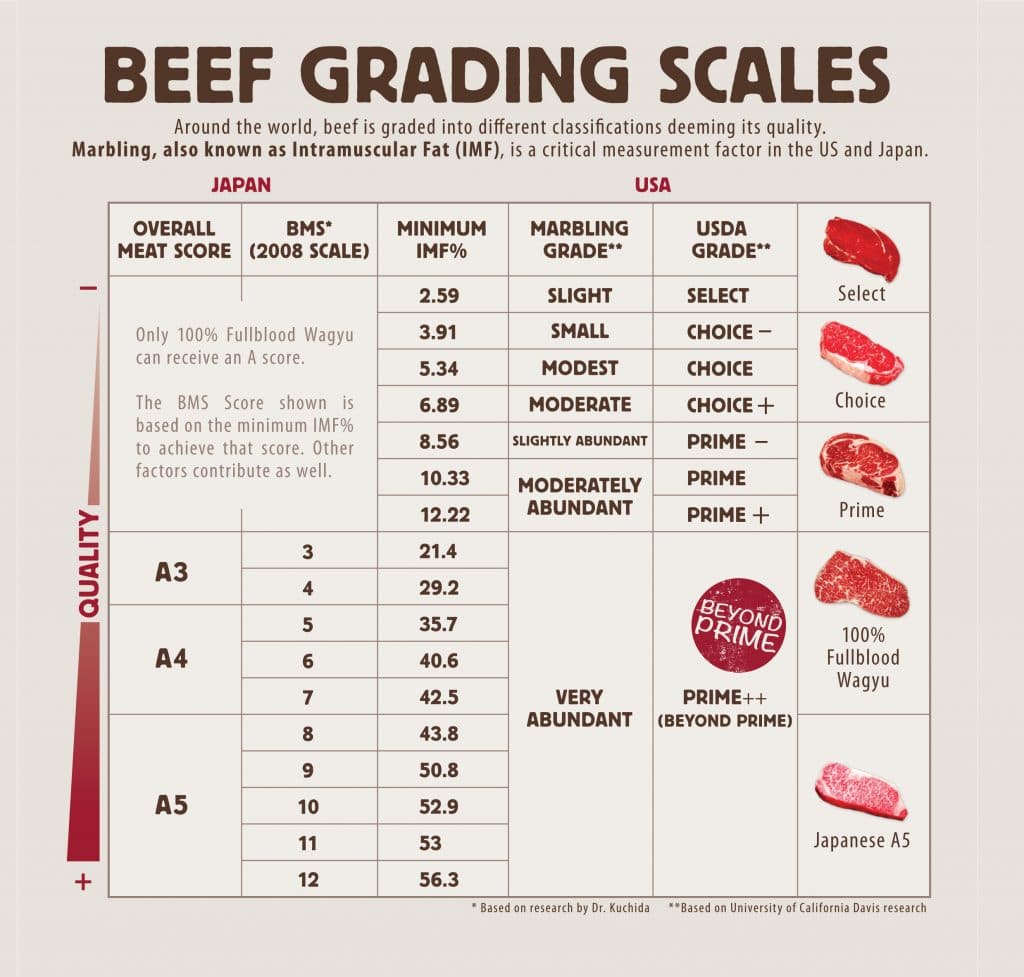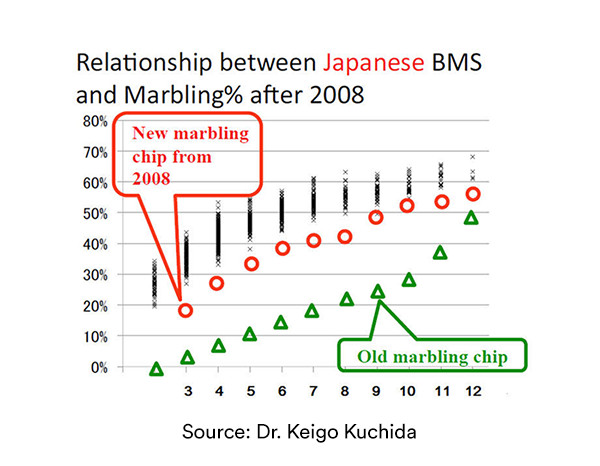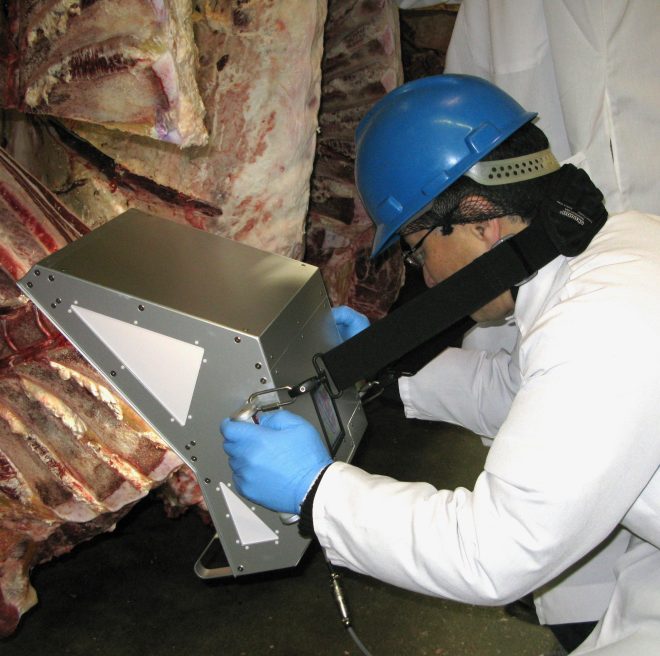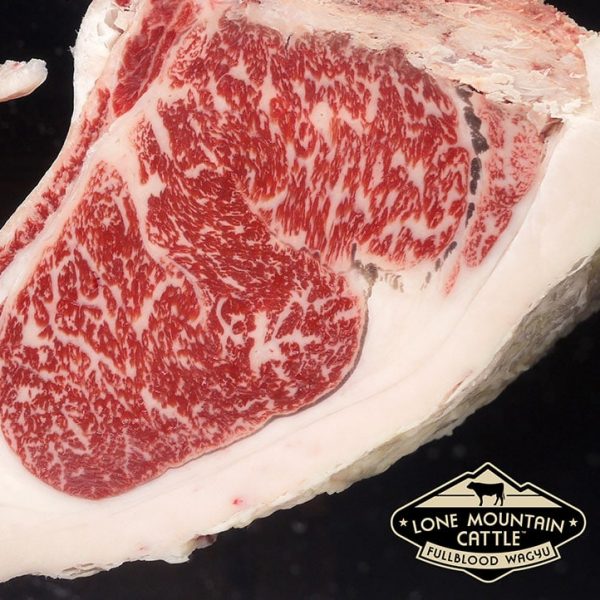Beyond Prime
Marbling is the most prized aspect of Japanese beef and breeders go to great lengths to create intense patterns that make the meat literally melt in your mouth. In fact, the beef grading systems in most countries are directly related to how much marbled fat is present.
In order to achieve the minimum quality grade for Wagyu in Japan (BMS 3), meat must be at least 21% marbled fat (IMF) and, the other end of the scale a BMS 12 grade carcass has graded up to 72% IMF.
In contrast, USDA’s highest grade; Prime is approximately 11% marbled fat (IMF). Only 3% of the beef in the USA is designated Prime, whereas 90% of Wagyu-influenced cattle (50% or higher) achieves a Prime score.
While Japan, the US, Australia, and other countries around the world use IMF as a critical factor for grading, each has their own scale and judging criteria.






